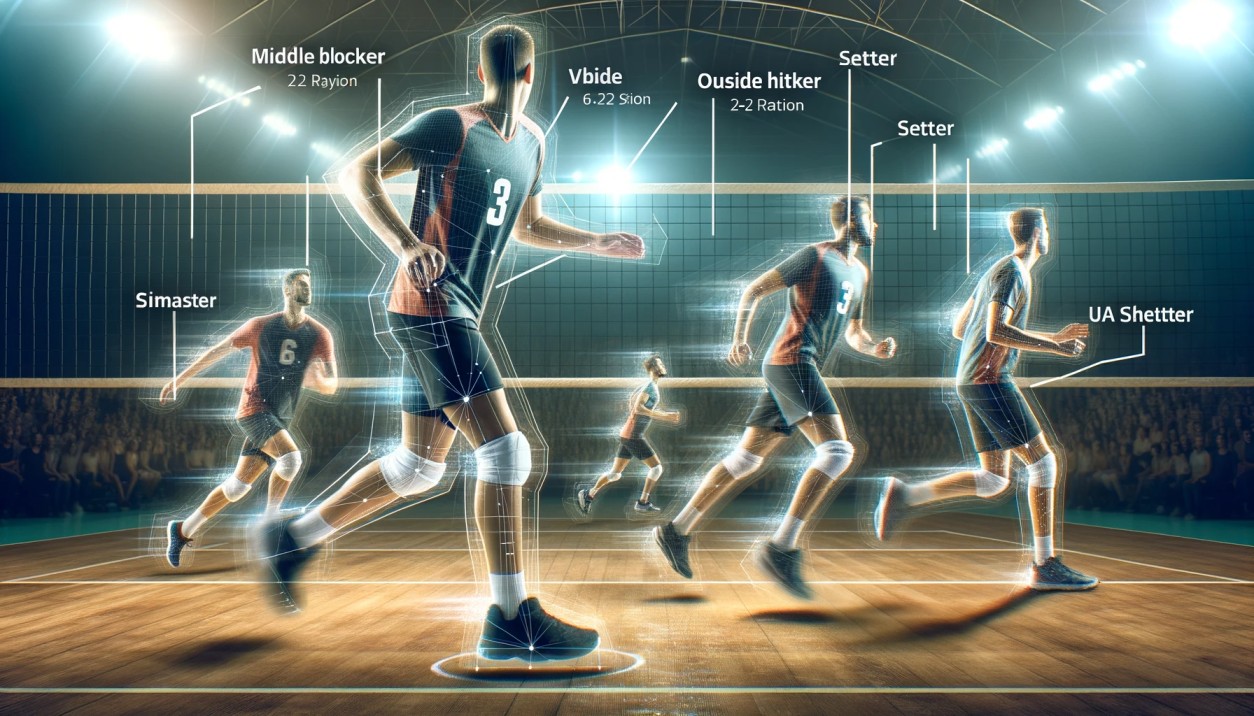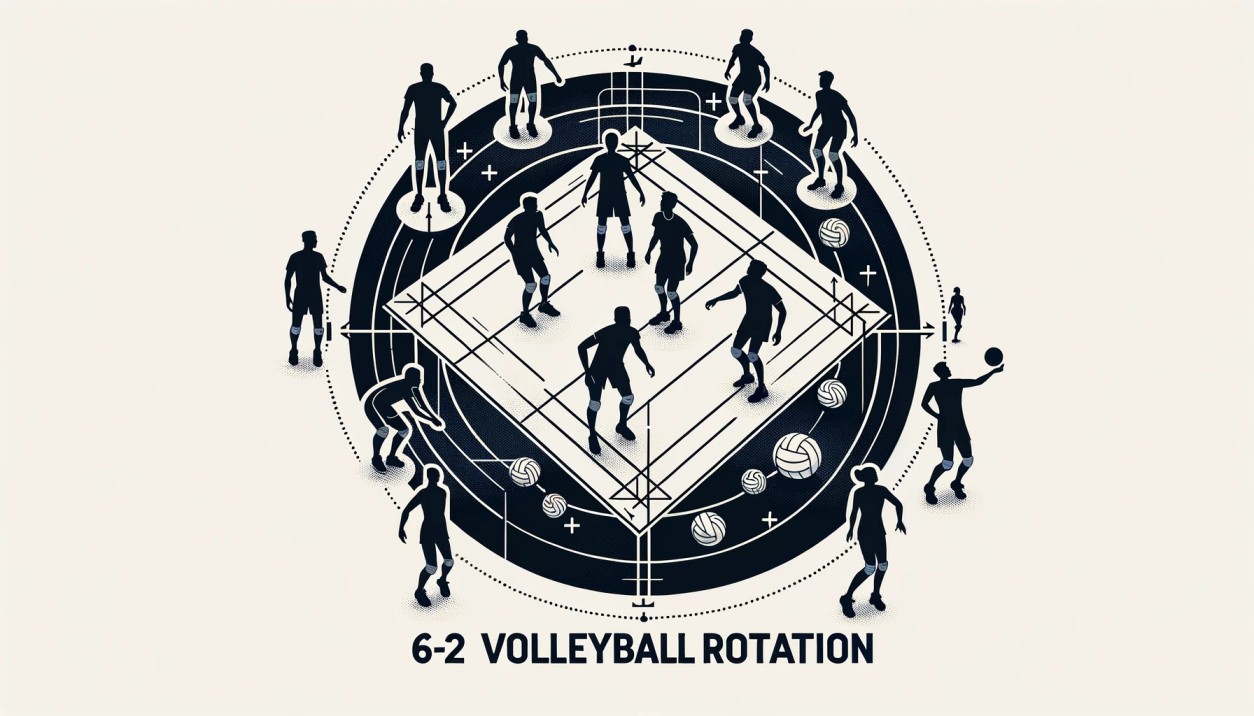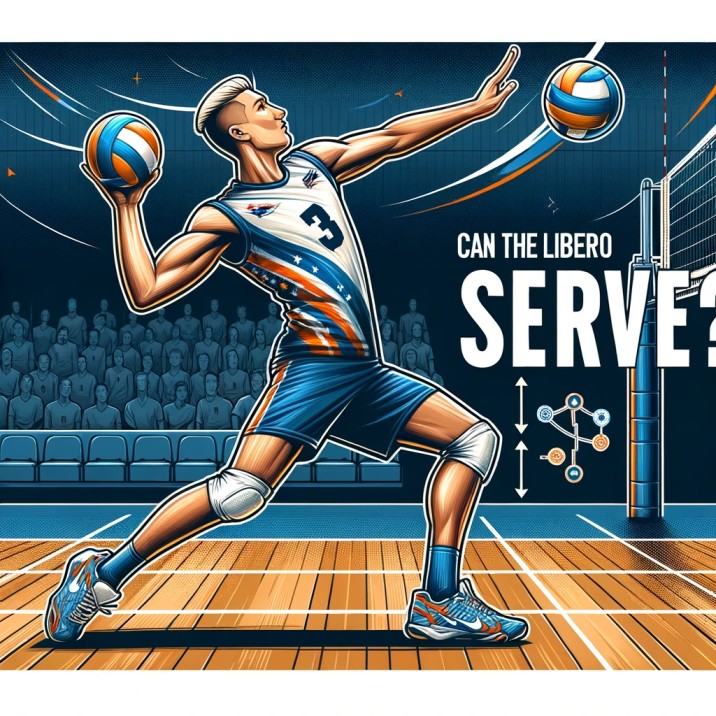6-2 Volleyball Rotation: Complete Guide
Introduction: Why Understanding the 6-2 Rotation is Crucial
In this article, complete information about 6-2 volleyball rotation is given. In volleyball, understanding rotations like the 6-2 rotation can make or break your game. Rotations determine your team’s offensive and defensive capabilities. In this article, we’ll dive deep into the 6-2 rotation, its advantages, and how to master it. Whether you’re a player or a coach, this guide has got you covered.
What is a 6-2 Volleyball Rotation?
In volleyball lingo, 6-2 means you have six hitters and two setters. In this rotation, you always have three front-row hitters, making it a powerful offensive strategy. Unlike the 5-1 rotation, where you have one setter for all six rotations, the 6-2 rotation allows for two setters based on the court position, giving your team more flexibility.
Why Choose a 6-2 Rotation?
- Offensive Power: With three hitters always in the front row, your team can pack a punch.
- Setter Flexibility: Two setters mean you can adapt more easily to different game situations.
- Less Predictability: The constant change in setters and hitters makes your team harder to read.
This rotation is particularly effective when you have a team with strong hitters but no standout, all-around setter.

The Basic Positions in 6-2 Rotation
In a 6-2 setup, you have:
- Front Row Positions
- Outside Hitter (OH): Primarily responsible for hitting and blocking.
- Middle Blocker (MB): The key player for blocks and quick hits.
- Opposite Hitter (OPP): Hits from the right side and blocks the opponent’s outside hitter.
- Back Row Positions
- Setter (S): Sets up the ball for hitters. In 6-2, you have two setters rotating this role.
- Defensive Specialist (DS): Focuses on receiving serves and digs.
- Libero: Specializes in defensive plays, cannot attack.
How to Execute a 6-2 Rotation: Step-by-Step
Starting Positions
- Front Row: Outside Hitter (OH), Middle Blocker (MB), Opposite Hitter (OPP)
- Back Row: Setter (S), Defensive Specialist (DS), Libero
Movement Patterns
- Front Row:
- OH moves to the left corner.
- MB stays in the middle.
- OPP moves to the right corner.
- Back Row:
- S moves behind MB to set.
- DS and Libero cover the backcourt.
Transitioning from Offense to Defense and Vice Versa
- Offense to Defense:
- Front row players transition from hitting to blocking.
- Back row players prepare for digs and serves.
- Defense to Offense:
- Setter takes the second touch to set up for hitters.
- Hitters transition from blocking to hitting positions.
Executing these movements smoothly is the key to maximizing the 6-2 rotation.
Common Mistakes and How to Avoid Them
- Overlapping and Other Rule Violations:
- Always maintain your rotational order.
- Use verbal cues to avoid overlapping.
- Communication Errors:
- Use short, clear calls like “Mine!” or “Yours!”
- Always keep eye contact with teammates.
Remember, practice makes perfect. The more you train, the fewer mistakes you’ll make.
Tips for Coaches: Implementing 6-2 in Training
- Drills Specific to 6-2:
- “Setter Swap Drill” to practice quick setter transitions.
- “Front Row Frenzy” for hitters to practice quick hits.
- How to Teach Players to Adapt:
- Use scrimmage games to simulate real-match scenarios.
- Provide real-time feedback during practice.
Coaches, your guidance is invaluable for mastering this rotation.
Advantages of A 6-2 Rotation
You’ll Always Have 3 Hitters In The Front Row
- Having three hitters in the front row at all times provides a significant advantage in terms of offensive capabilities.
- This setup allows for a variety of attack angles and increases the chances of scoring points.
The 6-2 Rotation Is Very Simple To Learn
- The simplicity of the 6-2 rotation makes it easy for new players to grasp the concept.
- It’s straightforward to implement, requiring less time to teach compared to more complex rotations.
6-2 Is Great For Teams With Setters Who Can Also Hit Well
- If your setters are also strong hitters, this rotation maximizes their versatility.
- It allows setters to focus on setting when in the back row and hitting when in the front row.
6-2 Is Good For Teams With Short Setters
- Having short setters can be a disadvantage in the front row where blocking and spiking are crucial.
- The 6-2 rotation allows for taller players to take the front row positions when the setter rotates to the back row.
More Opportunities For Substitutions/Increased Playing Time
- The 6-2 rotation offers more opportunities for substitutions, allowing more players to participate.
- This can be beneficial for team morale and gives players more chances to rest.
Disadvantages of A 6-2 Rotation
The Setter Can’t Attack In A 6-2 Rotation
- In a 6-2, the setter is usually in the back row, making them ineligible to attack at the net.
- This can limit the offensive options for the team.
In The 6-2 Rotation, It’s Harder For The Setter To Transition
- The transition from the back row to the front row can be more challenging for the setter in a 6-2 rotation.
- This can slow down the pace of the game and make the offense less fluid.
Having Multiple Setters Can Be Jarring
- Switching between setters can disrupt the team’s rhythm.
- Hitters may find it difficult to adjust to different setting styles.
The 6-2 Rotation Underutilizes Superstar Setting Talent
- If you have a superstar setter, the 6-2 rotation may not be the best way to utilize their skills.
- They will spend less time on the court, which could limit their impact on the game.
FAQs
What is the difference between 6-2 and 5-1 rotations?
6-2 has two setters and always three front-row hitters, while 5-1 has one setter and varies between two and three front-row hitters.
How do substitutions work in 6-2?
Substitutions are often made for setters when they rotate to the front row, allowing for a stronger front-row hitter.
Is 6-2 suitable for beginner teams?
It can be, but it requires good communication and understanding of positions. It’s often easier to start with a simpler rotation like 4-2.
Is there a libero in a 6-2 rotation?
Yes, a libero can be used in a 6-2 rotation. The libero is specialized in defensive plays and often replaces middle blockers or other players in the back row to improve the team’s defense and serve-receive.
What is rotation 6 in volleyball?
In rotation 6 in volleyball, the setter is usually in the right-back position, preparing to move to the right-front to set. The opposite hitter is in the right-front, the middle blocker is in the middle-front, and the outside hitter is in the left-front.
The other outside hitter and the libero or defensive specialist are in the left-back and middle-back positions, respectively.
What is rotation 2 in volleyball?
In rotation 2, the setter is typically in the right-front position, ready to set. The opposite hitter is in the middle-front, and the middle blocker is in the left-front. The outside hitters and the libero or defensive specialist occupy the back row, with one outside hitter in the right-back, the other in the middle-back, and the libero in the left-back position.
What are two disadvantages of the 6-2 rotation?
- Complexity: The 6-2 rotation involves more frequent substitutions and can be more complex to manage, especially for beginner teams.
- Setter-Hitter Timing: With two setters, hitters have to adapt to the setting style of two different players, which can sometimes affect timing and coordination.
Where is the setter in a 6-2?
In a 6-2 rotation, there are two setters, and one is always in the back row. The back-row setter is responsible for setting when they rotate into the right-back position, allowing for three hitters in the front row.
What is 5-1 and 6-2 in volleyball?
In a 5-1 rotation, there is one setter who sets for all six rotations. In a 6-2 rotation, there are two setters, and each sets when they are in the back row, allowing for three front-row hitters at all times.
What is a 51 in volleyball?
A “51” usually refers to a 5-1 rotation, which involves one setter who sets for all six rotations. This rotation allows for a consistent setting style but limits the front-row hitters to two or three, depending on the setter’s position.
What is a 6-2 with front row setter?
A 6-2 rotation with a front-row setter is a variation where one of the setters also acts as a hitter when in the front row. This is less common because it negates one of the main advantages of a 6-2, which is always having three front-row hitters.
What is the difference between a 4-2 and a 6-2 in volleyball?
In a 4-2 rotation, there are four hitters and two setters, but unlike the 6-2, both setters are always in the front row. This limits the team to only two hitters in the front row at all times.
What’s a 5-1 volleyball rotation?
A 5-1 volleyball rotation involves one setter and five hitters. The setter sets for all six rotations, and the number of front-row hitters varies between two and three, depending on the setter’s position.
What does 4-2 mean in volleyball?
In a 4-2 rotation, there are four hitters and two setters. The setters are always in the front row, limiting the team to only two front-row hitters at any given time. This rotation is simpler but offers less offensive power compared to a 6-2 or 5-1 rotation.
How Do You Coach The 6-2 Volleyball Rotation?
Coaching a 6-2 rotation requires a focus on team dynamics, player versatility, and strategic substitutions. It’s crucial to ensure that both setters understand their roles and that the hitters can adapt to different setting styles. Regular practice and game-time experience are essential for mastering this rotation.
Conclusion
Mastering the 6-2 rotation can significantly boost your team’s performance, offering a dynamic and flexible playstyle.
With consistent practice and keen attention to detail, you’ll be nailing those rotations and confusing your opponents in no time. So, what are you waiting for? Get out there and start practicing!






